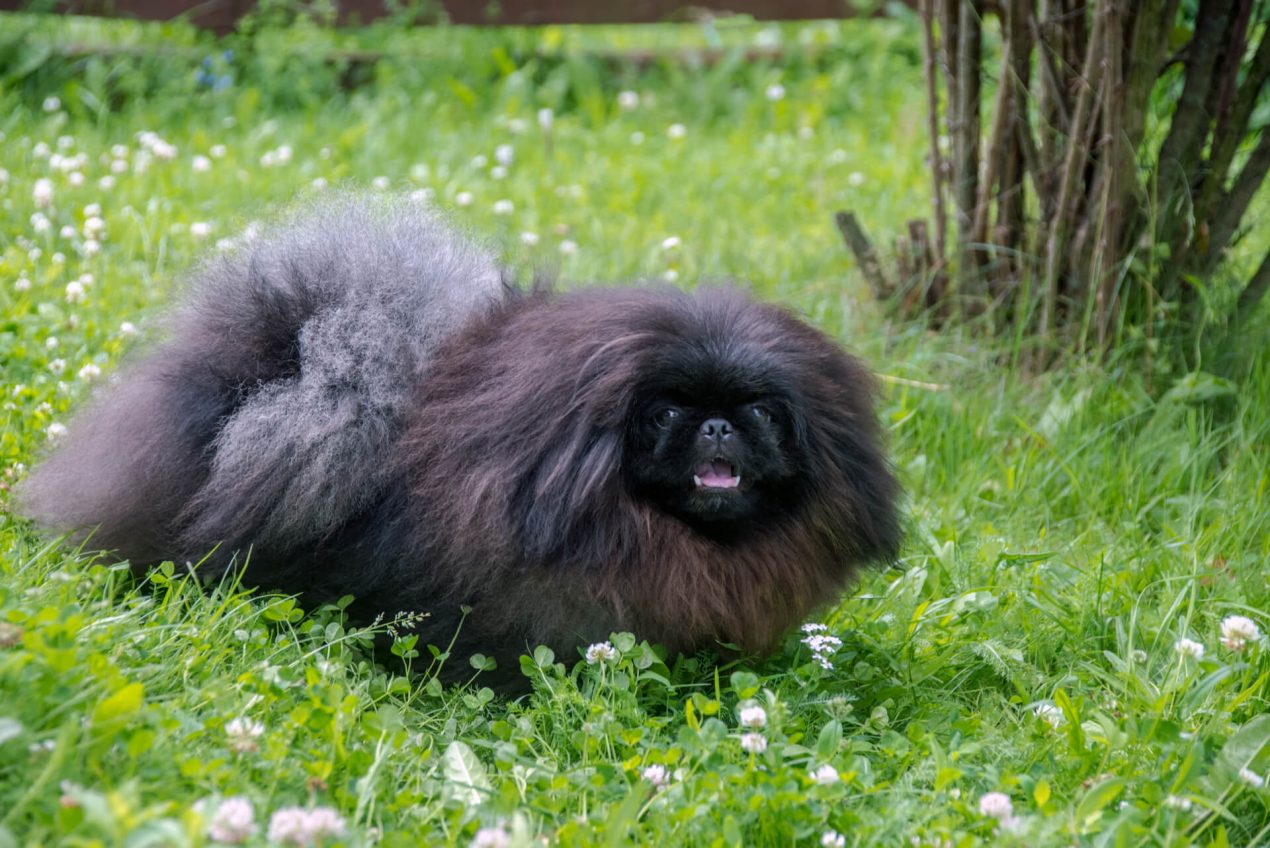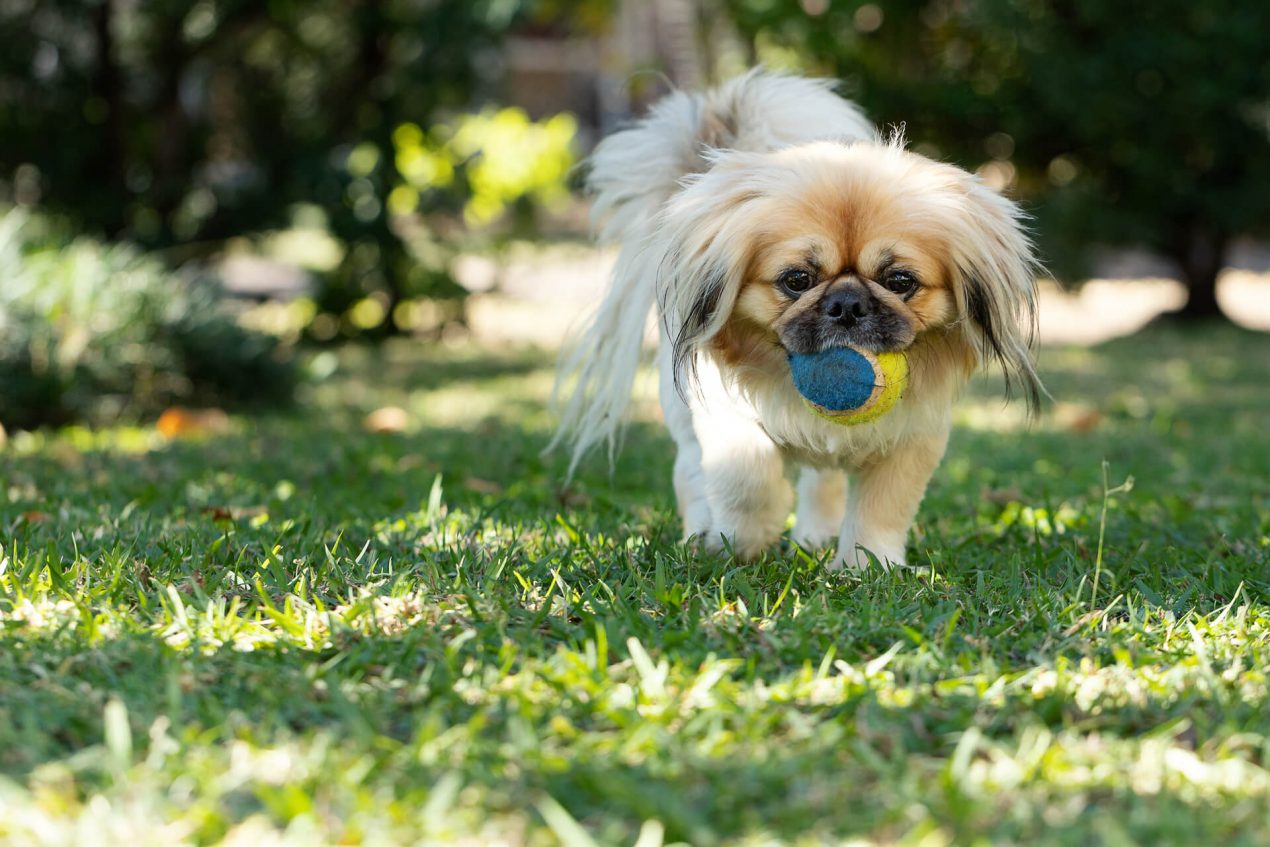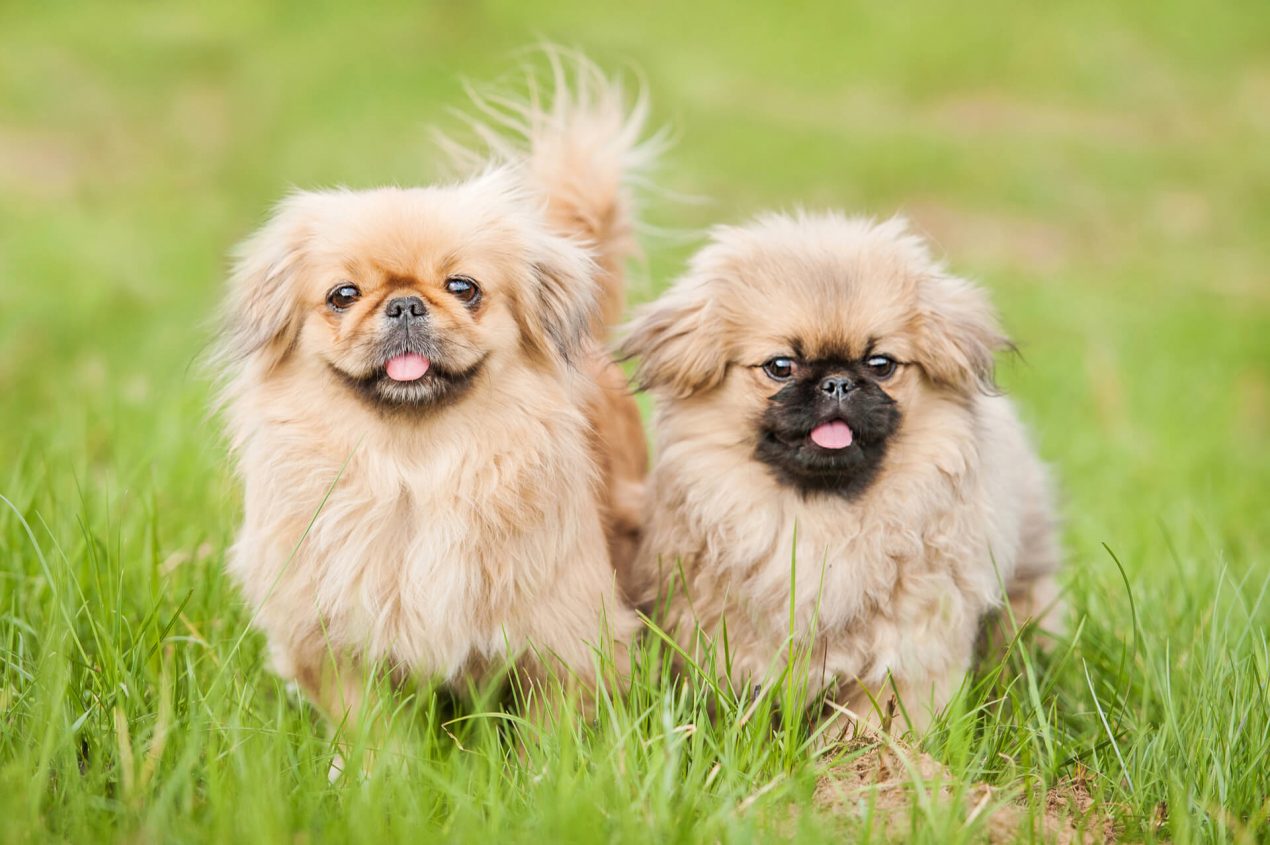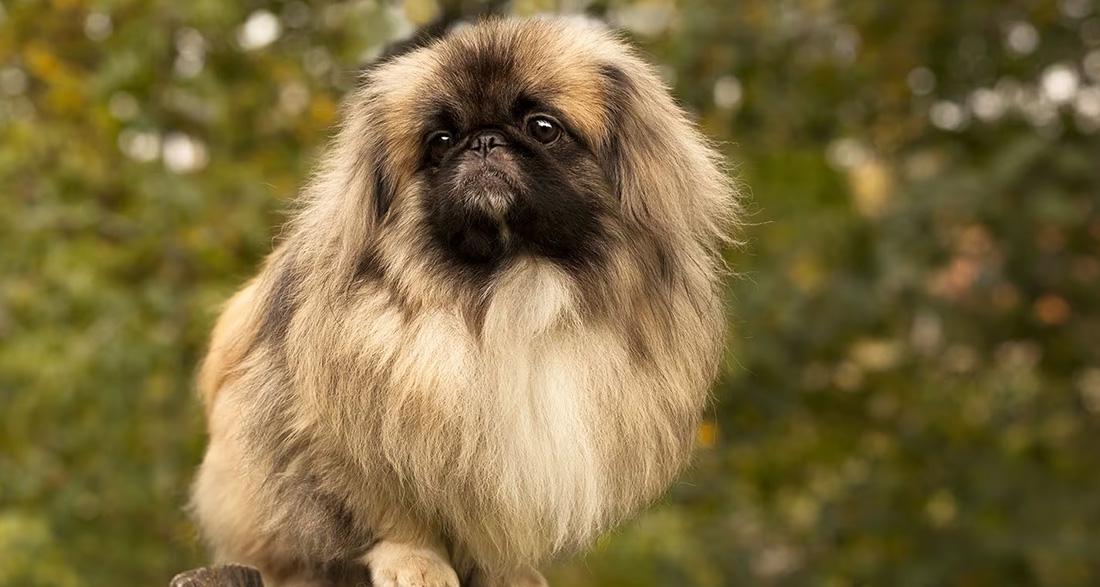The Pekingese, also known as Pekinese, is one of the oldest companion dogs in the world. With its quaint appearance and affectionate nature, the dog is particularly popular among retirees. In this profile, you’ll get information about the origin, temperament, and care of this purebred dog.
History of the Pekingese
The Pekingese is an ancient dog breed originating from the Chinese Empire. These small dogs served the imperial household as palace dogs over 2000 years ago. Centuries-old porcelain and jade figurines depict representations of Pekingese dogs. During the Qing Dynasty (1644–1912), numerous small sculptures of Pekingese were preserved. Like the Shih Tzu and Lhasa Apso, the Chinese referred to the Pekingese as the “Lion Dog.”
All these breeds were intended to resemble the Buddhist guardian lion. The rulers held their dogs in such high regard that it was inconceivable to part with them. Consequently, the Chinese were deeply affected when the despised Europeans seized five palace dogs during the Second Opium War. These dogs eventually made their way to England, forming the basis for European breeding.
The first representatives of the breed were already seen at exhibitions in 1864. In 1898, the British Kennel Club officially recognized the breed, and by 1909, the first Pekingese arrived in Germany. Since then, the breeding of these small palace dogs has been predominantly carried out by the English in the European region.
The first Pekingese were shown in the United States in 1909, and the AKC first registered the breed in 1915. Unfortunately, in recent decades, breeding efforts with increasingly extreme breed characteristics have significantly affected the breed. Dogs began to have larger eyes, flatter noses, and more fur. However, the current trend is moving back towards a healthier and more natural appearance. The Pekingese is classified in the FCI’s Group 9, “Companion and Toy Dogs,” in Section 8, “Japanese Spaniel and Pekingese.”
Breed Overview
GROUP: Toy
HEIGHT: 6 to 9 inches
WEIGHT: Up to 14 pounds
TEMPERAMENT: Opinionated, aggressive, stubborn, affectionate, intelligent, good-natured
COAT: Long, thick double coat
COAT COLOR: Typically variations of gold, red, or sable, but occasionally colors including black and tan, white, cream, sable, and gray
HYPOALLERGENIC: No
LIFE SPAN: 12 to 14 years
Temperament and Character
Bred as a companion dog for centuries, the Pekingese is a notably calm dog. However, representatives of the breed are attentive and intelligent. They require a close bond with their owner and can become excellent friends. Generally, they prefer to attach themselves to individual persons rather than an entire family. They demand their owner’s full attention and may react jealously if not in the spotlight. These loyal dogs are reserved around strangers and need time to warm up to them. Despite their small size, these fearless dogs make good guard dogs, alerting to strangers without excessive barking.
| Affection Level | High |
| Friendliness | High |
| Kid-Friendly | Medium |
| Pet-Friendly | Medium |
| Exercise Needs | Low |
| Playfulness | Medium |
| Energy Level | Medium |
| Trainability | Low |
| Intelligence | High |
| Tendency to Bark | Medium |
| Amount of Shedding | High |
Appearance of the Pekingese
The Pekingese has a short body with a pronounced waist. The head is large and relatively broad, with a short muzzle and round, dark eyes. The closely set ears appear heart-shaped and are covered with fur. The long, feathered tail sits high and is typically carried slightly curved over the back. The front legs are short, and the hind legs are robust and muscular. Pekingese dogs come in all colors except liver and albino. All color variations have a dark mask, indicating black pigmentation on the nose, lips, and eyelids.

The smooth coat is moderately long, forming a mane around the neck that should not extend beyond the shoulders. The straight topcoat is interspersed with a dense undercoat. However, the coat should never be so long that it restricts the dog’s movement, and the body shape should not be obscured. Unfortunately, there are some show dogs with exaggerated breed characteristics that suffer significantly as a result.
Puppy Training
You don’t need to be a professional to train the headstrong palace dog, but you should be familiar with their tendencies. It’s crucial to understand the breed’s characteristics and act accordingly. As long as you provide your Pekingese with loving and consistent training, you’ll have a great companion dog. Make it clear to your dog that you are in charge, and avoid praising them unnecessarily. Despite appearing innocent and cute, the puppy can quickly assume the role of the “decision-maker.” Enrolling in a dog school is recommended to help your puppy socialize with other dogs and receive necessary training support.
Activities with the Pekingese
Like their ancestors, today’s Pekingese is a rather laid-back dog. They are content with short walks and do not require strenuous physical activity. These small palace dogs are not suitable for people who want to engage in competitive sports with their dogs due to their compact build and short nose. Despite their easygoing nature, these dogs need daily exercise to prevent obesity. However, the most crucial thing for these small dogs is the company of their humans and daily affection.

Health and Grooming
The Pekingese belongs to the so-called brachycephalic breeds. The short nose complicates breathing, and the large, protruding eyes are sensitive. Excessively long fur also negatively impacts the health of the dogs. Therefore, before purchasing, ensure you acquire a dog with moderate breed characteristics. Due to their relaxed nature, these small dogs do not burn a lot of energy, so focus on maintaining a healthy diet. The most important aspect of grooming is daily coat care. Brush and comb the coat every day, not just during shedding periods, and check for dirt and parasites after every walk.
Is the Pekingese Right for Me?
If you are looking for a small dog for apartment living, the Pekingese makes an excellent companion. It is ideal for single individuals with plenty of time for their furry friend. It is also suitable for active retirees or elderly people who may not cover long distances. The Pekingese prefers being with its designated person and does not tolerate excessive commotion well. Before getting a puppy, familiarize yourself with dog training and, especially, coat care. With proper acclimatization, some members of the breed can also become family dogs.

For purchasing a puppy, contact a reputable breeder who does not prefer extreme breed characteristics. In clear terms, both parent dogs should have a clear nose without wrinkles, no bulging eyes, and not excessively long hair. The breeder should also be a member of the German Pekingese Club of 1987 e.V. and provide evidence of breeding experience. Only about 200 Pekingese puppies are born in the USA each year, so be prepared to spend around 1200 dollars for one of these rare purebred Pekingese puppies. Stay away from cheap offers on the internet!
Interesting and Fun Facts
- One of the first Pekingese in Europe was adopted by Queen Victoria, who named him “Looty,” derived from the English word “loot” for “war booty.”
- The last Empress of China, T’zu Hsi, gifted one of the palace dogs to the daughter of U.S. President Theodore Roosevelt. This event contributed to the breed’s recognition in the United States.
- Among the twelve dogs on the Titanic was a Pekingese named Sun Yat-sen, who, along with two other dogs, survived the tragic disaster.
Do you have a Pekingese or are you considering getting one? Share in the comments what makes them special in your opinion!


